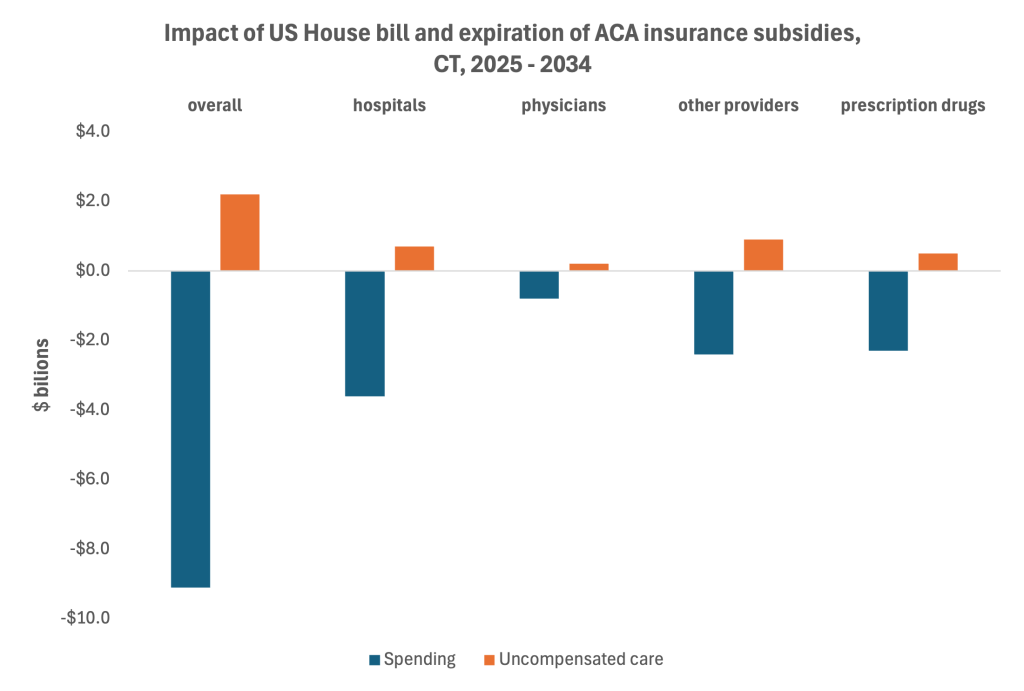Medicare
Medicare chapter in CT Healthcare Explained updated
We’ve made another massive update to CT Healthcare Explained – this time to the Medicare chapter. The update was prompted by new numbers and new research, especially about Medicare Advantage plans. We also included the changes to the program required by the budget bill passed by Congress and the Trump administration this month. CT Healthcare…
Read MoreMedicaid chapter in CT Healthcare Explained updated
We’ve made a massive update to the Medicaid chapter of CT Healthcare Explained. The update was prompted by new numbers and updated performance. We also included the significant changes to the program required by the budget bill passed by Congress and the Trump administration this month. We also included a description of Connecticut’s decision not…
Read MoreAnalysis: CT is a National Leader in Fight to Control Drug Costs
This year, Connecticut passed meaningful laws to control stubbornly-high prescription drug prices. According to the Office of Health Strategy, prescription drugs are among the top three drivers of Connecticut’s unaffordable healthcare costs, across Medicaid, Medicare, and private insurance. States don’t have the powerful levers that federal policymakers could access, and federal law can be a…
Read MoreCT health policy learning opportunity
To help build health policy capacity in our state, the CT Health Policy Project is launching a guided study/class that builds on CT Healthcare Explained. There is no cost for the course. There is a webpage for the course (learncthealth.org) that starts in September and runs through December. We’ll use a hybrid format – video…
Read MoreCT drops five notches in health system performance ranking
Connecticut ranks 11th among states according to the Commonwealth Fund’s 2025 Scorecard on State Health System Performance report. While we’re still ahead of 39 states, we fell from 6th place in the 2023 report. The problems touch the cost of care, no surprise, but also utilization/access and quality. The cost of care gets a lot…
Read MoreFederal changes are coming into view – it’s not good, but there is hope
It’s hard to keep up with the updates about the potential impact of Congressional healthcare proposals. Just when there is a glimmer of light, it gets worse. I won’t blame anyone for not reading any further. For those of us who can’t look away, here are two new analyses of note and two glimmers of…
Read MoreCoverage chapter in CT Healthcare Explained updated
We’ve refreshed the numbers, links, and trends in the Coverage chapter of CT Healthcare Explained. The update was prompted by new numbers but also by significant potential changes being considered by Congress and the Trump administration now. We have a lot to lose in Connecticut, where our uninsured rates are low compared to other states.…
Read MoreNew analysis finds CT Medicaid payment rates compare well to other states
A new analysis finds that Connecticut Medicaid payment rates averaged 71% of Medicare rates for the same 33 codes for common healthcare services in 2024, slowly narrowing the gap since 2019. The national average was the same at 71%. Comparison state averages were below Connecticut’s. Comparison states’ Medicaid rates were not as generous as Connecticut’s…
Read MoreUS News: CT is third best state for healthcare
New US News rankings find Connecticut’s healthcare system is behind only Hawaii and Massachusetts. The rankings are based on surveys across all 50 states and primarily government data. We are fortunate to be # 2 in the US in Healthcare Access and # 5 in Public Health Outcomes. We are a bit lower, at #…
Read MoreCT healthcare costs grew faster than ever in 2023, but Medicaid bucked the trend
Download the analysis updated 7/22/2025 This month, the Office of Health Strategy (OHS) released their three annual Healthcare Benchmark reports. The main event, the Cost Growth Benchmark report finds that healthcare costs rose by 7.8% in 2023, well above the 2.9% benchmark set by an old OHS committee based on economic indicators. This is the…
Read More







